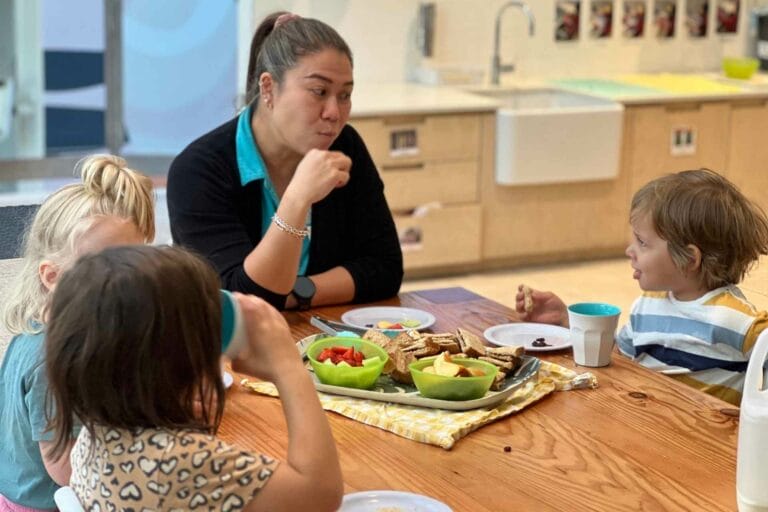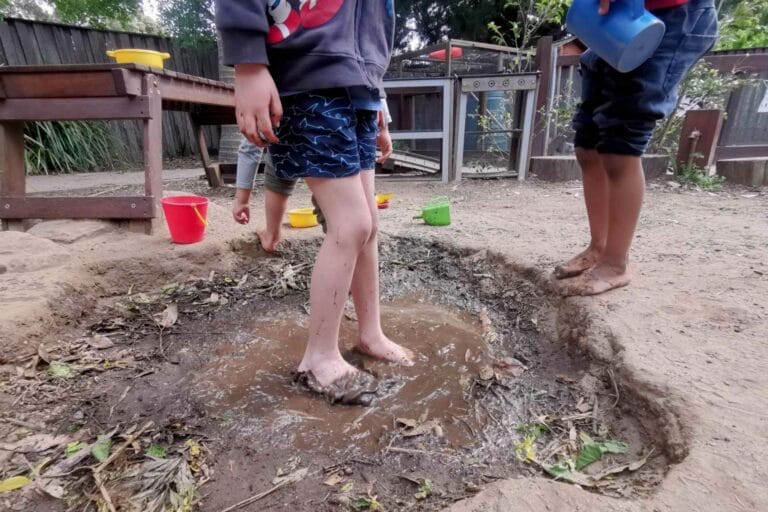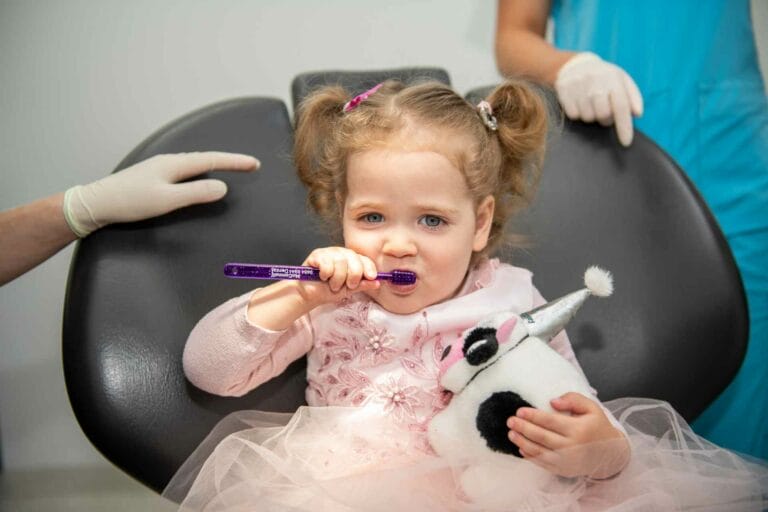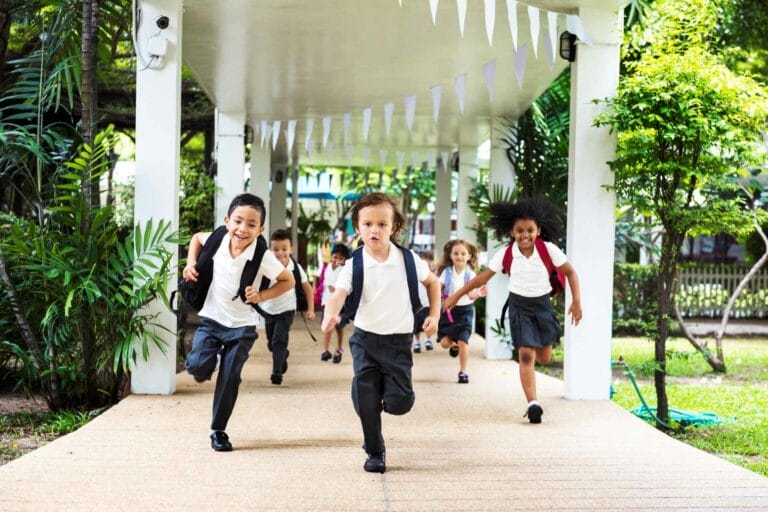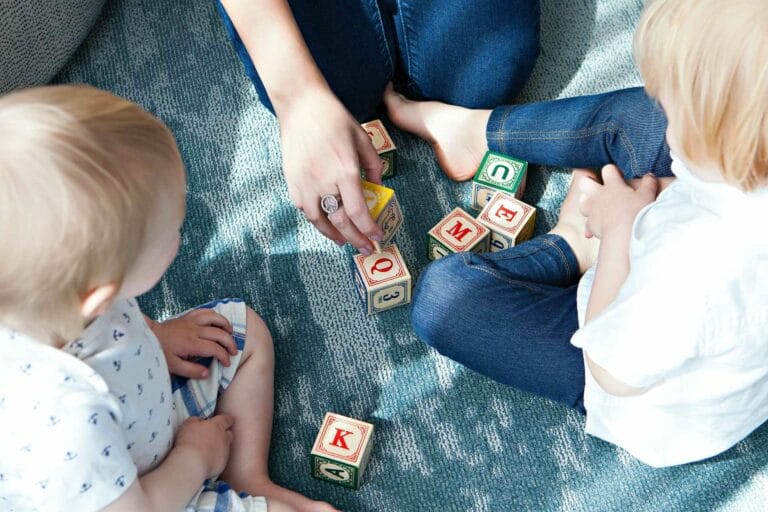Why your children need healthy risky play experiences
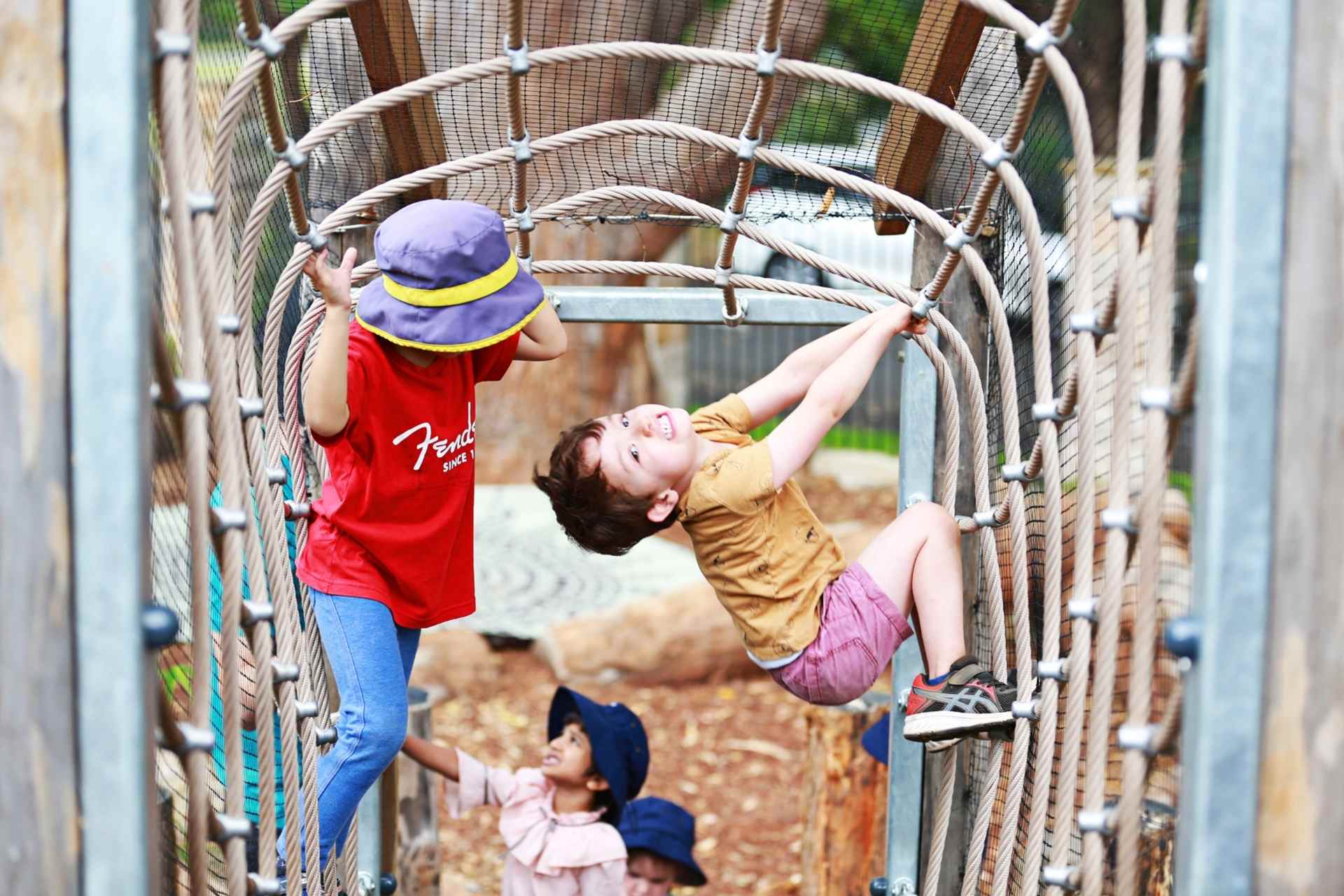
When you think of your favourite childhood play experiences, what sort of activities come to mind? Bike riding, tree climbing, swinging, playing in hiding spaces, or sliding down high steel slides? These types of risky play experiences can offer intense, positive exhilaration of achieving mastery and a sense of achievement when the risk has passed (ACECQA, 2016).
In recent years there has been a decrease in children’s access to risky play experiences, particularly in the outdoor environment, as there has been an over-emphasis on risk-aversion and safety. Research has linked risky play to many developments and health benefits for children in the early years, including “risk-assessment skills, increased physical activity and well-being and promoting social competencies and resilience” (Obee, Sandseter & Harper, 2021). Children who have been given opportunities to effectively assess and manage risk from early childhood are better equipped to manage risk as an adult.
Let’s take a closer look at risky play and how we can promote it in our children’s early years.
What is risky play?
Risky play encourages children to try something new, feeling on the borderline of being out of control (often due to height or speed), experience exhilaration and fear at the same time, and overcome fear to achieve success. Risky play experiences give children the opportunity to challenge their abilities and extend their skills on their own terms. It does not involve encouraging children to push themselves beyond their abilities or engage in careless behaviour (Little, 2019).
Sandseter (2007) categorised risky play as:
- Play with great heights: The thrill of climbing, jumping and balancing from heights.
- Play with high speed: Feeling the thrill of speed without being in complete control, for example when bicycling, sliding or running.
- Play with dangerous tools: Being trusted with real tools such as woodwork tools or ropes.
- Play near dangerous elements: For example, balancing on rocks or playing with water.
- Rough and tumble play: Chasing, playful wrestling or fencing with sticks are some examples.
- Play where children can ‘disappear/get lost’: Playing in cubby houses or bushes, being trusted to explore and play on their own.
What are the benefits?
Healthy risky play opportunities are crucial to a child’s learning and development. Some of the life-long learning, skills, and dispositions to be gained include:
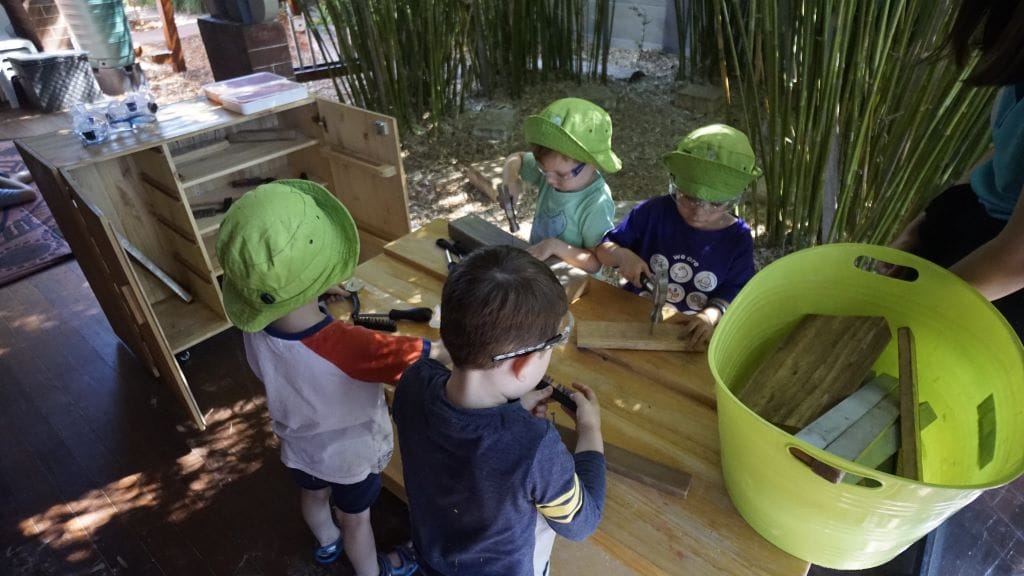
- Confidence, competence and self-esteem.
- Risk-assessment and problem-solving skills.
- Fundamental movement skills such as jumping, running and balancing, that help to develop muscle strength, motor fitness and endurance.
- Perceptual and spatial-orientation abilities such as depth, shape, size and movement perception.
- Independence, decision making, and taking responsibility for their own actions.
- Resilience and persistence with frustrations, change and unexpected outcomes.
- Respect for danger, hazards and experimentation.
- Creativity and resourcefulness.
How can families support healthy risky play?
As Brussoni (2012) suggests, choose play environments and experiences that are ‘safe as necessary’ rather than ‘safe as possible’. The best safety is for children to learn through play how to deal with different environments and situations rather than avoiding them.
In our Sydney Early Education Centres, we undertake risk-benefit assessments for all risky play experiences provided. That is, we make a comparison of the risk of a situation relative to its related benefits. We then plan risk-mitigation procedures to help manage the risks or alleviate the hazards and empower children to take responsibility for their own safety and the safety of others, through discussions of risks and the setting of ‘rules’ together.
Here are our top 5 tips for families:
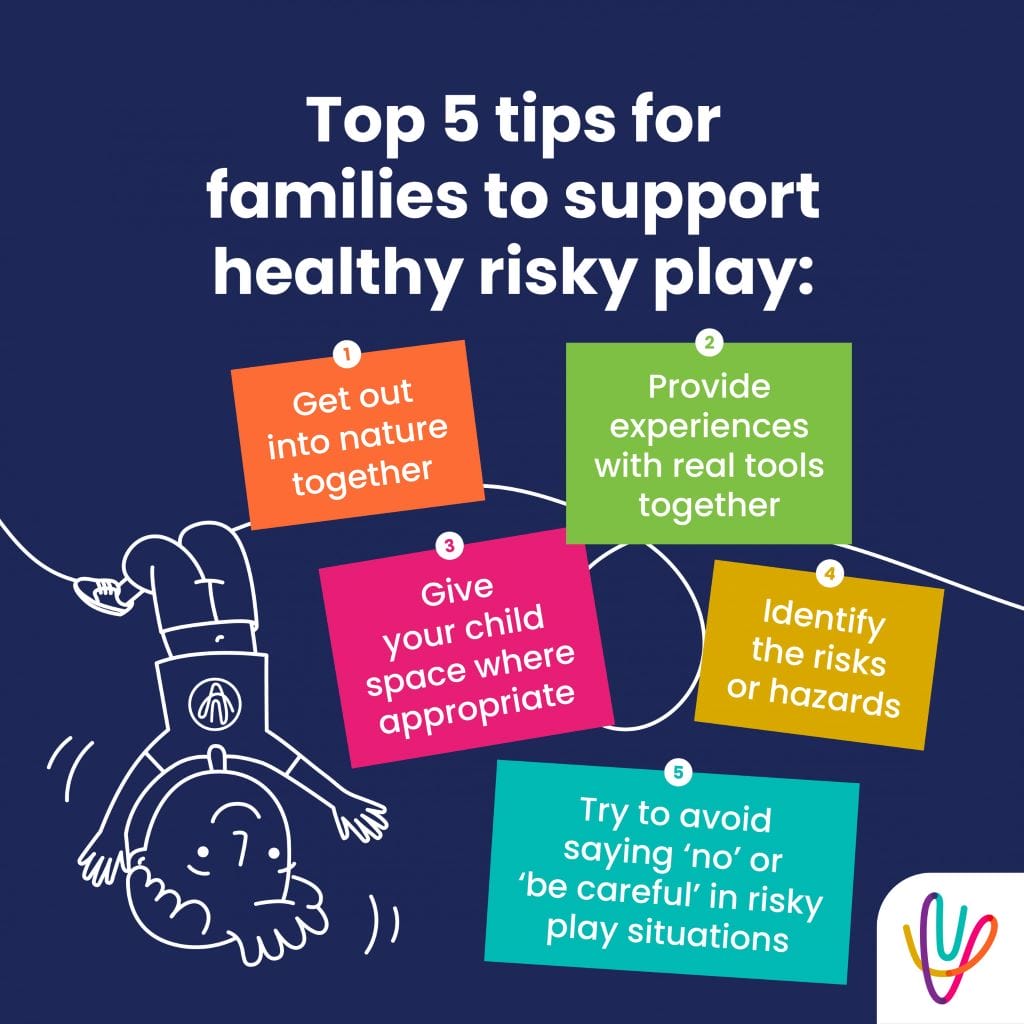
- Get out into nature together, such as in parks or on bush walks, as natural settings provide many rich-risk play opportunities.
- Provide experiences with real tools together, such as cooking, gardening or ‘fix-it’ jobs around the house.
- Give your child space where appropriate, supervising out of the child’s direct view, so they can gain confidence in mastering their skills ‘on their own’.
- Identify the risks or hazards. If there is a hazard, step in and help.
- Try to avoid saying ‘no’ or ‘be careful’ in risky play situations. Rather, encourage your child to identify the risks and discuss ways of managing them together. Set boundaries to help guide them through a progression of experiences and levels of risk according to their abilities and experience.
Instead of saying ‘be careful’, try saying:
- Take your time.
- Is the pathway clear?
- Do you feel like you are balanced?
- What is your next move?
- Make sure that branch is strong enough before you try to swing on it.
- What’s your plan for that big stick?
(Little, 2019)
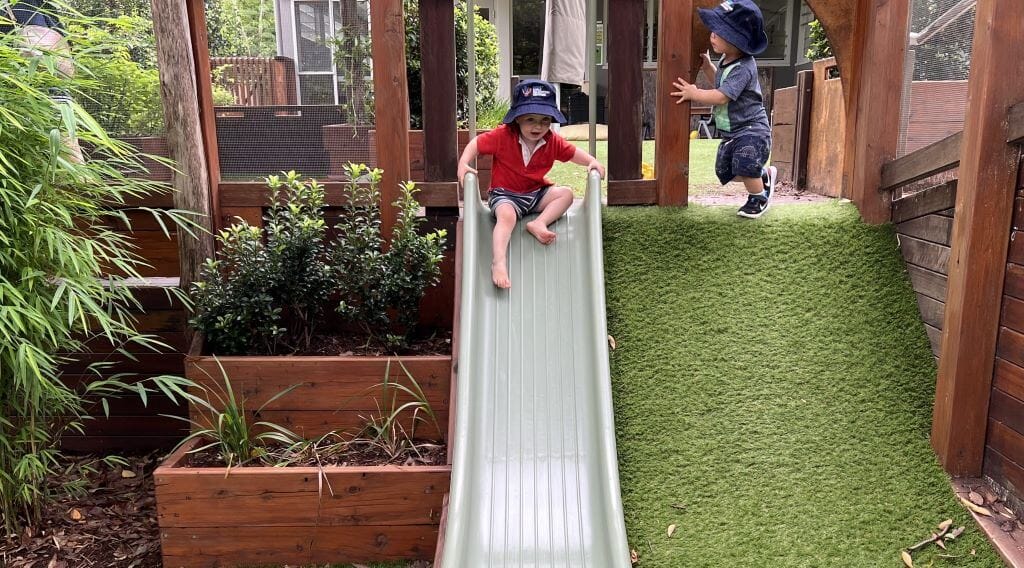
“The real risk in children’s play is that there is no risk. Children need the challenges of risky play with the support and encouragement from adults.’
Warden, 2010
References and further reading:
ACECQA Newsletter Issue 2, 2016
Bundy, A. C., Luckett, T., Tranter, P., Naughton, G., Wyver, S., Ragen, J., & Spies, G. (2009). The risk is that there is ‘no risk’: A simple, innovative intervention to increase children’s activity levels. International Journal of Early Years Education, 17 (1), 33-45.
Brussoni, M., Olsen, L. L., Pike, I., & Sleet, D. A. (2012). Risky play and children’s safety: Balancing priorities for optimal child development. International journal of environmental research and public health, 9(9), 3134-3148.
Obee, P., Sandseter, E.B.H., & Harper, N.J. (2021). Children’s use of environmental features affording risky play in early childhood education and care, Early Child Development and Care, 191:16, 2607-2625, DOI: 10.1080/03004430.2020.1726904
Little, H. (2019). Risky play and the outdoors. Early Childhood Australia: Everyday Learning Series, 17:3.
Sandseter, E.B.H. (2007) Categorising risky play—how can we identify risk‐taking in children’s play?, European Early Childhood Education Research Journal, 15:2, 237-252, DOI: 10.1080/13502930701321733
We’d love to show you more about how we incorporate risky play into our daily activities. If you would like to find out more about our centres you can book a tour or send us a message.

Written By
Margaret Wilson, Manager SEEC
